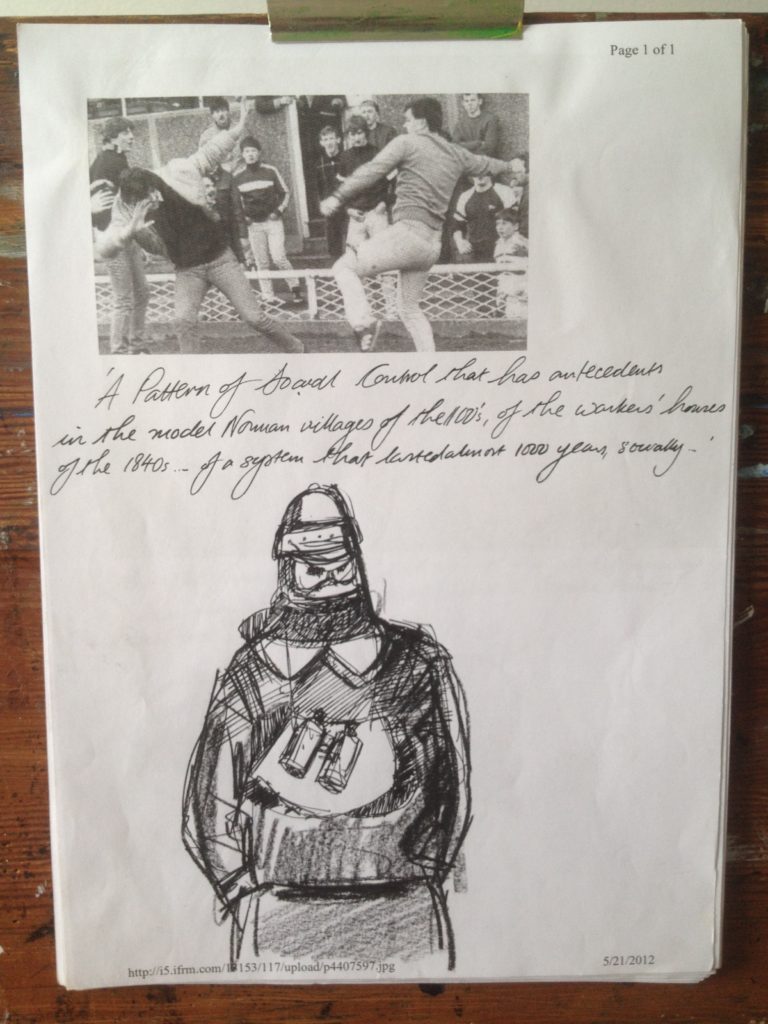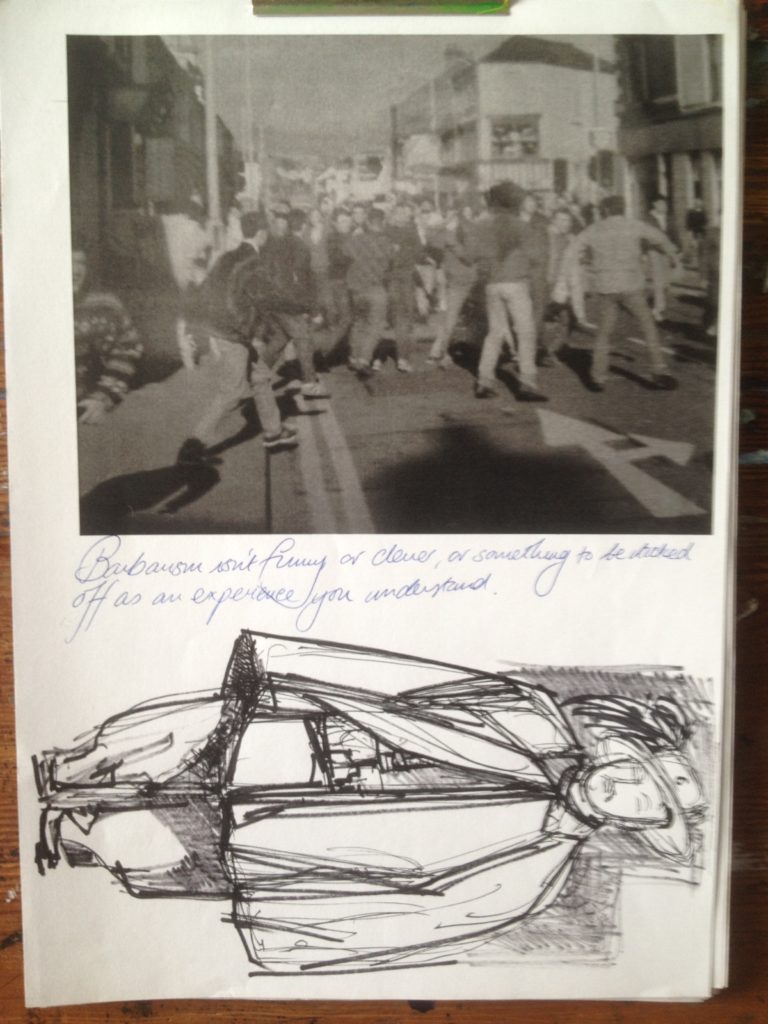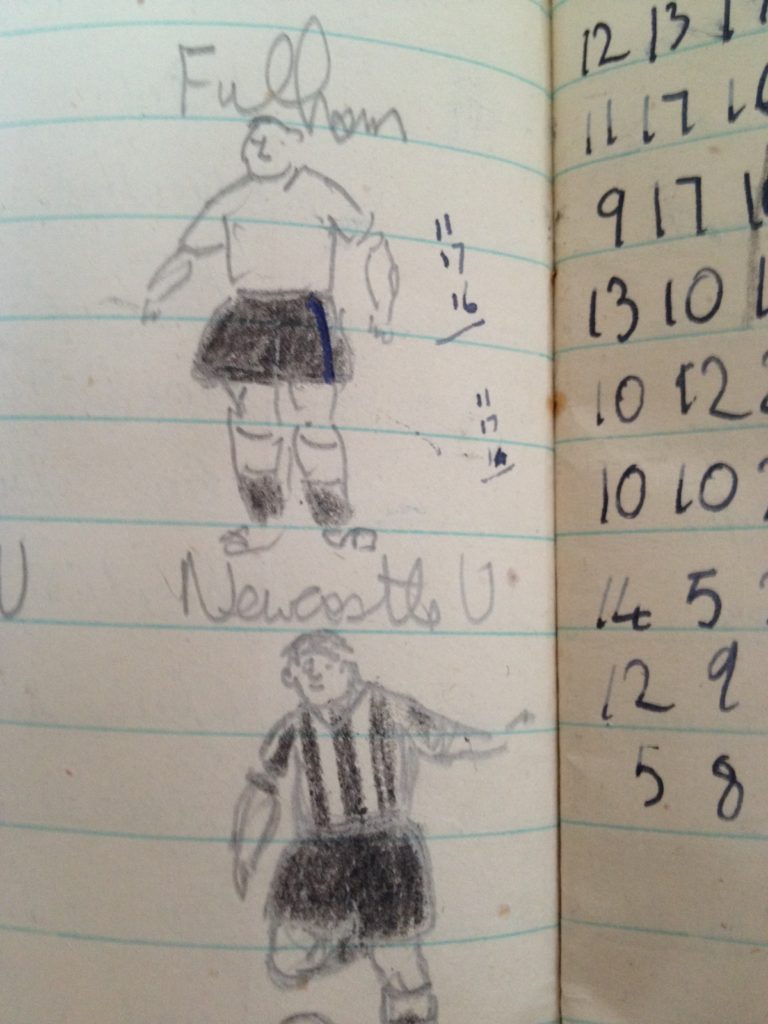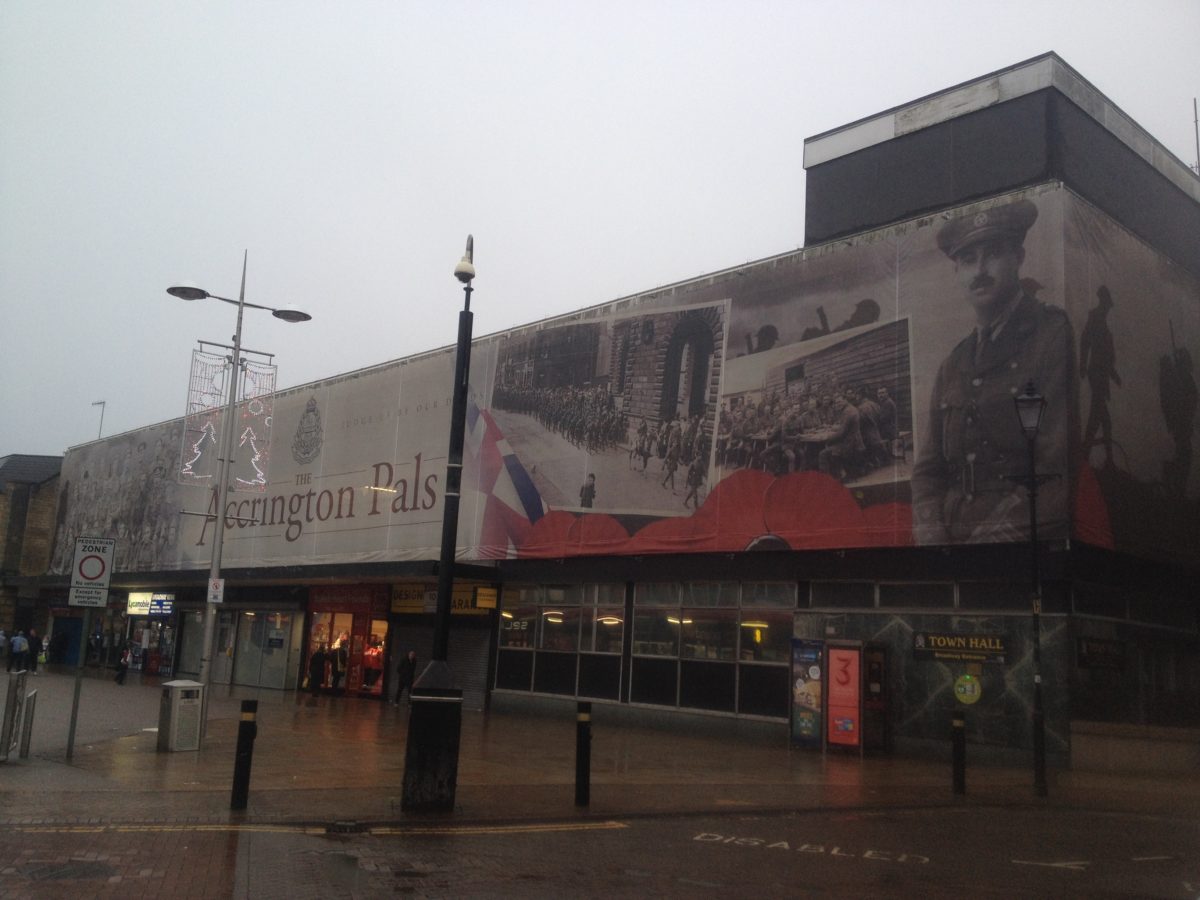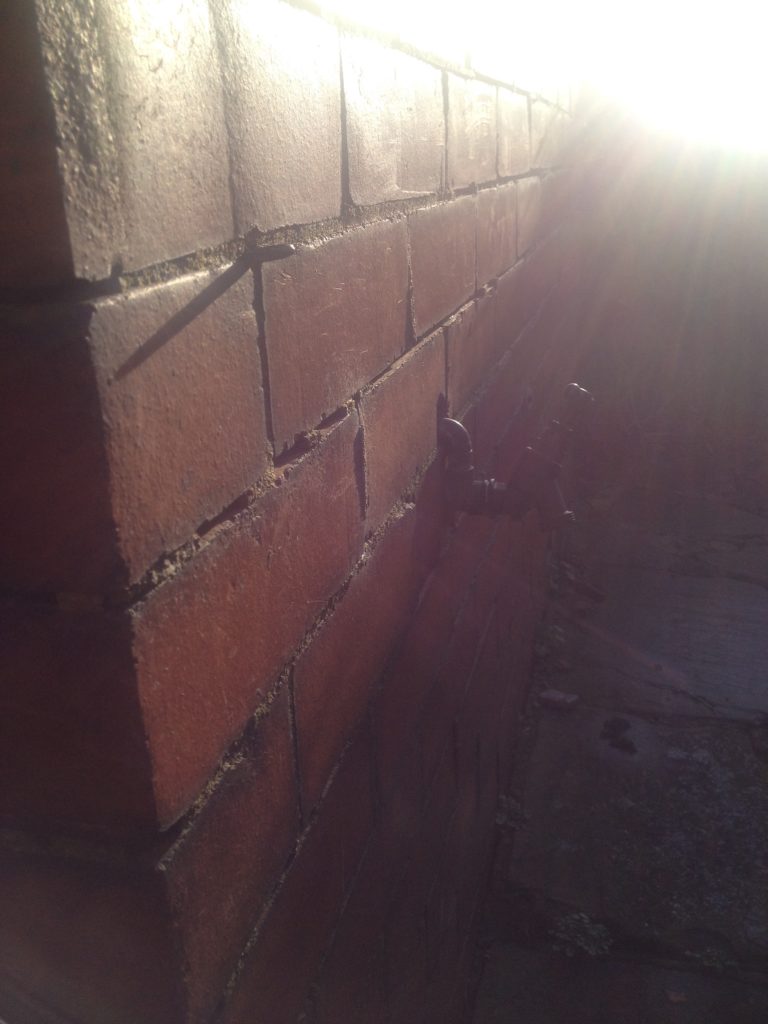British football culture has long fascinated Richard the Photocopier. Its idiocies, its fashions, its smells, its march from being a rabid, unregulated, violent cavalcade to a bovine testing ground for control through entertainment, have been played out in front of him since the mid 1970s. And very often, he couldn’t be arsed understanding it. It was an ever-present shade, formed from Albion’s darkest, most begrimed and befouled underground recesses. It needed no explaining, outside of it being a perfect help-meet for the heady, Ice Cream War dreams of British militarism. These photocopies were deliberately photographed in a manner that left questions, showed edges, felt scruffy, uneasy. Like the past they depict.
Author: curator
Futbol Moderne #2
Football has always kindled a creative spark for me. I remember very little about my first games from the 1970s but can vividly remember the atmosphere of pent up rage, hard-bitten humour and machismo. And the “Fauvist”, iridescent green of the pitch.
When young my love of football also found expression through my obsession with kits from the 1920s and 1930s. Why, I wondered, couldn’t the 1970s footballer wear the (to me) much more elegant styles of the inter-war years? During the same time (1977-1983), I was engaged in painting the “Lace War” armies of the C18th Austro-Hungarian Empire. This venture got out of hand very quickly. Somewhere in my parents’ loft marches every regiment that fought at Waterloo (Airfix HO/OO scale figures) and a fair number of figures depicting the terrible opening battles of the First War.
During 2011-12, I returned to examine this thematic link, discovering that there may be more in it than my pre-adolescent whims let on. These are sketches from a day long “draw-in” in Leiden’s then un-renovated Scheltema. The day also saw me down a crate of ale, with the aid of a cheese sandwich. The uniforms are those from all combatant armies of The Great War.
Futbol Moderne #1
The 1970s and 1980s were the era where I began to watch football matches in Lancashire and the North East. Initially accompanied by an adult (a pal’s dad, my dad or my granda) during the mid-to-late 1970s, I attended my first games on my own around 1984, with my first serious away trip being spring 1987 to watch Newcastle United play Manchester City at Maine Road (0-0 if you must know). Football has always kindled a creative spark for me. I remember very little about the actual games from the 1970s but can vividly remember the atmosphere of pent up rage, hard-bitten humour and machismo. And the “Fauvist”, almost giddily bright splash of green of the pitch. This somehow opened up a feeling I could only express through drawing.
During the same time (1977-1983), I was engaged in painting the armies of the C18th Austro-Hungarian Empire in full; specifically that which had fought during the later Wars of the Spanish Succession (covering 1740s-1760s). Somehow that dovetailed with obsessively drawing footballers from the 1920s and 1930s. Football history was a subject that, back then, was often ridiculed by my increasingly “casually-clothed” peers.
During 2011-12, I returned to examine this thematic link, discovering that there may be more in it than my pre-adolescent whims let on. These are sketches from a day long “draw-in”(accompanied by a crate of ale, which was polished off day-tripper charabanc style, with the aid of a cheese sandwich). The uniforms are those from all combatant armies of The Great War.
Subbuteo Politico #2
My father and my uncles requisitioned Felling Labour Party branch’s Minute notebooks (on which my granda was Chair) in the late 1940s and early 1950s, in order to keep a record of their Subbuteo leagues. In the current climate of mistrust and self-righteousness, I find this an oddly comforting thought. How much fun football seemed back then, channeling the same nerdy impulses into something creative and throwaway, not phone ins or blogs ranting on about stats.
What is encouraging – and something we should remember about the human condition – was the gradual move towards the imagination; the League teams not as interesting in the long run as a set of fantasy teams with their own stars and villains. You can see that in the main image in this post.
One interesting fact is that the Labour party’s rosette from the late 1940s was dark olive green with a white centre (replete with the words “Vote Labour”) with green and white ribbons.
Subbuteo Politico #1
One of the great things about paper is that it can be commandeered as a trusty helpmate in carrying out a wide range of tasks. My father and uncles did such when they requisitioned my granda’s Felling Labour Party Minute notebooks to make a thorough, near-decade long record of their (very early) Subbuteo league.
It’s worth noting too that the early Subbuteo players were made of card.
Copying and recycling paper to a new purpose; part of our own personal Bhavacakra.
The artists practise what the priests and politicians think is forgotten…
Post Ides Idling #2 2018
These are photographs that I wanted to make into photocopies, but didn’t. Not because of their suitability or otherwise as I’m not sure whether the concept of suitability, as such, plays any part in this particular reproductive process. I still think that the grey furze of the photocopied image does to some extent replicate the film between your sight and inner sight. In that respect anything photocopied (in effect performing the act of taking one step away) brings us one step closer to understanding something.
But sometimes the time between the photograph, or drawing, or the discovery of the objet trouvé, takes time to determine. In this series of posts I also wanted to show you what East Lancashire looks like in winter from the top of a bus. I have one complaint about these buses and that is they are too warm. The heating is always on ridiculously high.
Post Ides Idling 2018
These are photographs that I wanted to make into photocopies, but didn’t. Not because of their suitability or otherwise as I’m not sure whether the concept of suitability, as such, plays any part in this particular reproductive process. I still think that the grey furze of the photocopied image does to some extent replicate the film between your sight and inner sight. In that respect anything photocopied (in effect performing the act of taking one step away) brings us one step closer to understanding something.
But sometimes the time between the photograph, or drawing, or the discovery of the objet trouvé, takes time to determine. In this series of posts I also wanted to show you what East Lancashire looks like in winter from the top of a bus. I’ve had many an adventure on the bus to Manchester, and heard lots of stories, like “what would die first in a desert, a rat, or a camel?”
Who can tell?
Time doing nothing is not time wasted. (Georges Remi).
Post-Ides Reopening – 2018
The Museum is now open as the end of winter reckoning has taken place and whatever debts we thought we had have been paid to no-one. How tiresome the world is at present. Maybe we should all indulge in a private, personal version of Pharmakon. In silence. The Museum is here for you, as a place to escape, a digital milk bar, worshiping the healing power, and bounty, of paper.
Accrington Red Brick Coalbunker Interzone #2
I have strong memories of mucking about in the grate of the new house we moved into in 1972. The grate – where water from the kitchen would collect – was a constant source of fascination. Staring at the ripples of water would induce a trance-like state. Airfix soldiers would drown, and my brightly coloured, too-light all-purpose play-ball would inevitably find its way there.
Recently, some kind of time-bubble opened up and I found myself repeatedly sketching the bricks of the kitchen wall by memory, or doodling from old photographs of myself in my favoured interzone, the patch between the coal bunker, the backdoor and the grate. How soothing Accrington’s red brick is, able to withstand the warm, benevolent Lancastrian gloaming, damp and accumulated industrial filth, able to stand out alongside the blackened, blasted sandstone.
Tomatoes #3
I used to like going to the Columba Club or Felling WMC in Felling, with my granda in the very late 1980s/very early 1990s when I studied at the university of Newcastle upon Tyne. We’d sometimes got to the allotment beforehand to get some tomatoes from the greenhouse. I remember one night when my granda celebrated 60 years in the Labour party; 1932-1992. Labour Chief Whip Derek Foster came. No relation to the curator.
These photocopies of multiple drawings of Politburo members (including – I think – Gorbachev, Andropov, Chernenko and Gromyko) somehow bring to mind the club members. I don’t want to speculate too much about any political similarities or sympathies. It was both a different world and looking at a different world, back then.


